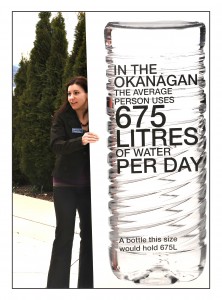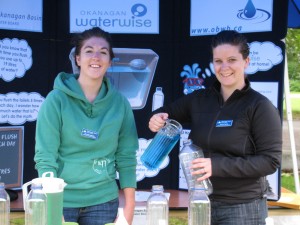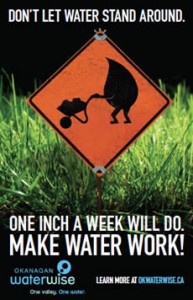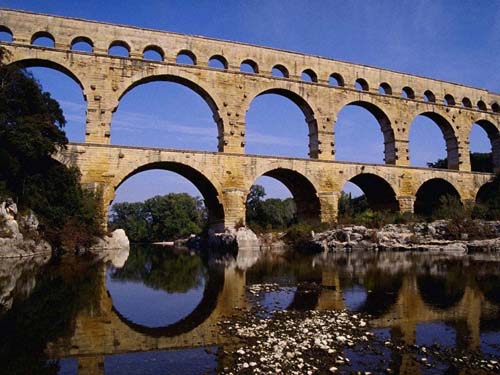“If you’re not part of the solution, you’re part of the precipitate.”
Steven Wrightfont
I’ve been thinking lately about the incredibly complexity of our water systems. Any town or city, treating millions of gallons of drinking water, pumping it to our homes, then pumping it back for re-treatment and recycling. Millions of gallons – out of sight, out of mind – taken completely for granted.
It was a matter of civic pride to have these invisible systems, a sign of progress, where at the turn of a tap, water (hot and cold) arrives instantly at any sink in the house. Now, funnily enough, every municipality has a water awareness campaign emphasizing the value of water and how people need to get informed, stop wasting water, and reduce pollution. We are busy making water visible again.
The issues are complicated. Essentially, we are seeing practical limits to “space-age” engineering solutions. It’s not that our technology isn’t getting better and better, but when you are (like the City of Kelowna) comparing construction of a multi-million dollar filtration plant to using naturally-clean water from Okanagan Lake, it makes sense to place a high emphasis on keeping the lakes pristine, and educating the public about what they need to do.
The stakes are getting higher in part because our standards are getting higher (you may have noticed the increase in boil water advisories), and the costs of treating and pumping have gone up. Maybe most importantly, as communities grow there are ever more people who can be affected by system breakdowns. I was in Vancouver in 2007 when a freak storm overloaded the drinking water treatment for 2 million people. Ironically, it was a water conference, and the main complaint was that no coffee was available!
 As for climate change – you can safely expect everything to get more unpredictable, more confusing, more complicated. It would be good, under these conditions, to have the public support right behind the water utilities. So here we are, and everyone in water delivery, water treatment, and water governance is talking about communication.
As for climate change – you can safely expect everything to get more unpredictable, more confusing, more complicated. It would be good, under these conditions, to have the public support right behind the water utilities. So here we are, and everyone in water delivery, water treatment, and water governance is talking about communication.
There is definitely some science to it. Ad campaigns are good for starting conversations and setting the tone, but the real action is in social marketing. I saw this when I visited my parents on the coast last year. I’d just watched a video about how people respond when they compare their own water use to their neighbours. There it was on my parent’s utility bill, “Your water consumption is FAIR (yellow street light symbol) compared to the average in your area.” Like every communication professional’s dream, they sat at the kitchen table arguing whether that was a good rating (Dad), or a bad rating (Mom), and how they could do better.
To get this sophisticated, neighbourhoods have to be fully metered, and the utility has to be set up to do the calculations and get the information back to the homeowners in an easy-to-read form.
Other social marketing campaigns target high users by knocking on their doors and offering free “water audits,” or giving awards and yard signs to people who put in drought-tolerant landscaping. Denver Water is famous for having very funny, very effective campaigns that have all been trademarked (no stealing slogans!).
 At the Okanagan Basin Water Board we work at the valley-scale, through our WaterWise program. We don’t have the capacity for a ground campaign, and we look for other ways to get the word out. Most municipalities have their own water campaign focused on local conditions, so it makes sense to add value rather than duplicate efforts, and provide a common set of resources that can be customized. This summer, we ran a pilot add campaign with Greater Vernon Water, called “Make Water Work.”
At the Okanagan Basin Water Board we work at the valley-scale, through our WaterWise program. We don’t have the capacity for a ground campaign, and we look for other ways to get the word out. Most municipalities have their own water campaign focused on local conditions, so it makes sense to add value rather than duplicate efforts, and provide a common set of resources that can be customized. This summer, we ran a pilot add campaign with Greater Vernon Water, called “Make Water Work.”
But with a varied geography, and a varied public, you can’t just rely on one thing. Messages to moms (the shoppers and bill-payers) are different than messages to dads (who actually do the irrigation), or the kids (famous for their powers of influence and persuasion). To really penetrate society, you have to find something for everyone. Thanks to Corinne Jackson, our communications coordinator, we also now have a WaterWise website, Facebook Page, Twitter feed, newspaper and radio series, and a You Tube channel featuring the creative work of summer intern, Graham Campbell.
Each year, in Las Vegas (where else?) there is a huge (how could it be otherwise?) conference for water conservation professionals – and change is spreading rapidly. Water conservation communication is at the front line for climate change adaptation, experimenting with new approaches and new technology. In most parts of the world it runs on tight budgets, and there isn’t a lot of willingness to move to tough restrictions ahead of a real crisis. Nonetheless, these programs lay the groundwork for bigger changes if and when they are needed.
Supposedly, one of the contributing factors to the fall of Rome was the vulnerability of the aqueducts – cut the aqueducts, and there goes civilization. Without raising unwarranted alarms, it’s good to get people thinking about our 21st century versions of aqueducts, and help make them less vulnerable.


Pingback: Rocks, computers, and other tools for distributed networks | Building Bridges
Pingback: Water and the Future | Building Bridges
Pingback: Learning from the landscape: cultivating a sense of place in the Okanagan. | | Building BridgesBuilding Bridges
Pingback: Mud-bogging and other ways we love the land too hard | | Building BridgesBuilding Bridges